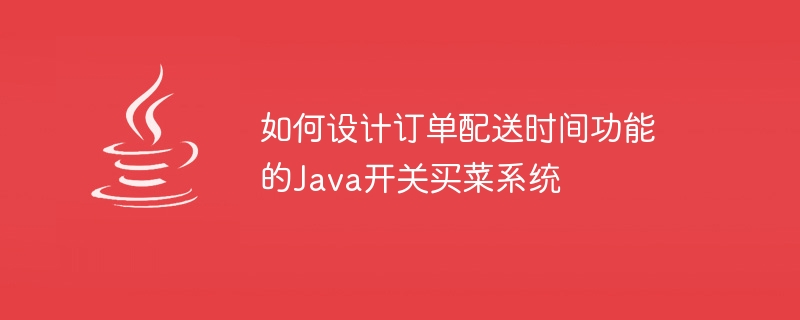

How to design a Java switch grocery shopping system with order delivery time function
The order delivery time function plays a very important role in modern e-commerce systems. It directly It is related to the user’s shopping experience and the merchant’s delivery efficiency. In the switch grocery shopping system developed in Java, how to design the order delivery time function is a problem that needs careful consideration. This article will introduce how to design this function from the aspects of demand analysis, database design and code implementation.
1. Demand Analysis
Before designing the order delivery time function, we need to conduct a demand analysis to clarify what functions and features the system should have. First, users should be able to select the delivery time period they want when placing an order, such as morning, afternoon or evening. Secondly, the system should have the ability to automatically schedule shifts to ensure that there are enough delivery personnel for delivery in each time period. Finally, the system should also provide a backend management interface to facilitate the administrator to set and adjust the delivery time.
2. Database design
The design of the order delivery time function cannot be separated from the support of the database. We can design a table to store information about the delivery time period and associate it with the order table. The table structure is simple as follows:
delivery_time
3. Code Implementation
In Java development, the order delivery time function can be realized by using code to implement database operations. First, you need to configure the database connection and create relevant Java classes to implement operations such as adding, deleting, modifying, and querying data. When placing an order, after the user selects a delivery time period, the system will check whether the delivery capacity of the delivery person in that time period is remaining. If there is any left, the delivery time is saved in the order table; if there is no left, the user is prompted to select another time period. At the same time, in the background management interface, the administrator can set and adjust the delivery time. In code implementation, you can define a DeliveryTime class to represent the delivery time, and define relevant methods in this class to implement functions such as addition, deletion, modification, and query.
4. Front-end interface design
On the user interface, the order delivery time function is usually presented in the form of a drop-down menu, from which users can select the delivery time period they want. On the order page, users can see delivery time options and select the time period that suits them. At the same time, when there is no remaining delivery time, the system should also give corresponding prompts.
Summary:
The order delivery time function is an important link in Java development and requires careful consideration in requirements analysis, database design, and code implementation. Through reasonable design of database structure and code implementation, as well as reasonable front-end interface design, an efficient and stable order delivery time function can be realized. Such functions can not only improve users' shopping experience, but also improve merchants' delivery efficiency, providing strong support for the development of e-commerce systems.
The above is the detailed content of How to design a Java switch grocery shopping system with order delivery time function. For more information, please follow other related articles on the PHP Chinese website!




